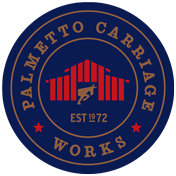by Van Sturgeon, Certified Tour Guide with Palmetto Carriage Works in Charleston, SC
One of the most alluring architectural vistas in our country can be seen as you travel north on Church Street and gaze up at the portico and steeple of St. Philip’s Church. The church’s beauty is enhanced by the fact that it extends beyond the sidewalk into the middle of Church Street, which gracefully curves around the triple portico.
The church you see today is the second on this site. The original held its first service on Easter Sunday 1723, and burned down in a fire in February 1835.
The so-called Old Church (sketched below) was situated so that it provided a visual terminus to the city’s central north-south thoroughfare. It was, after all, as far north as you could go in the colonial walled-city at that time. It’s grandeur was magnified by the manner in which it majestically crowned Church Street. Charleston’s most famous architect, Robert Mills, observed that “the effect produced upon the mind in viewing the edifice is that of solemnity and awe.”
In the 1739 map below, north is to the right. As you can see, the Old Church was bounded on the north by a wall. Just outside the wall was Daniel Creek, which is the current location of Market Street. This map also imagines what that section of the city would look like if the walls were gone, the creek filled in, and Church Street extended, which would happen in the late 1700 and early 1800s.
You can see that Church Street narrows significantly as it winds around the church. Since the road was never intended to carry heavy traffic past the church, that bottleneck initially presented no problem. But that had all changed by the time the Old Church burned in 1835.
Church leaders met the day after the fire and heard a resolution offered by Nathaniel Russell Middleton that “a new Church should be built on the same plan and on the same foundations as the old church.”
But, not everyone in the city agreed with Middleton’s proposal. Many wished to take advantage of the opportunity created by the destruction of the Old Church to straighten and widen Church Street. As the city had grown, the road had been extended well to the north, but that choke point in front of the church had remained.
A letter to the Charleston Courier signed by “Citizen,” described the hazards he believed this inflicted on travelers:
When you remember, gentlemen, the number of lives that have been lost by persons thrown from horseback and their brains dashed out against the pillars of that Church, humanity calls upon you to arrest that mad project.
It’s hard to argue against riders getting their “brains dashed out.” But a member of the church penned a mocking reply proposing that action be taken to protect all travelers, at all times, and in all locations. He wondered whether it might not be an improvement to have our brick walls well padded, stuffed, and cushioned? If this cannot be done, I would have you apply to our humane city council to raze our city, and rebuild another on a new and improved plan . . . then a man, especially when sober, may drive in perfect safety of brain, limb or cranium.
Members of City Council may have been amused, but they were not convinced. They voted 11-1 to straighten Church Street by moving the foundations of the “New Church” back 48 feet so its front would be in line with the street’s eastern edge. But, the state-appointed Commission for Opening and Widening Streets, Lanes and Alleys objected to that plan because of the disruption it would cause to the existing grounds and burial sites, “which are consecrated by feelings the dearest to the human heart.”
As a compromise, the Commission suggested moving the “New Church” back 22 feet, which would bring the north-south porticoes in line with the east side of Church Street. The road would be widened to 50 feet.
That plan was adopted so that today, the steeple of the “New Church” projects beyond the sidewalk, and the road still curves gracefully around. The “New Church” remains an apparent visual terminus to one of Charleston’s loveliest and most historic colonial streets.
To learn more about our beautiful city, book a tour below!
